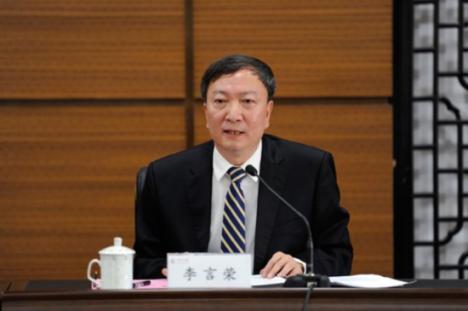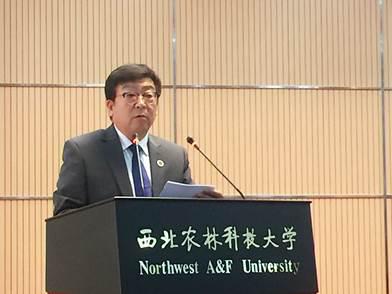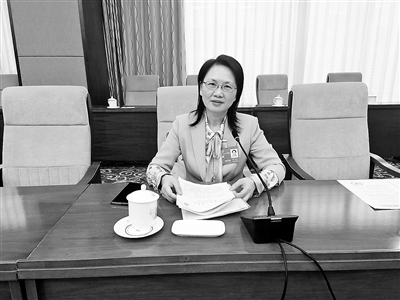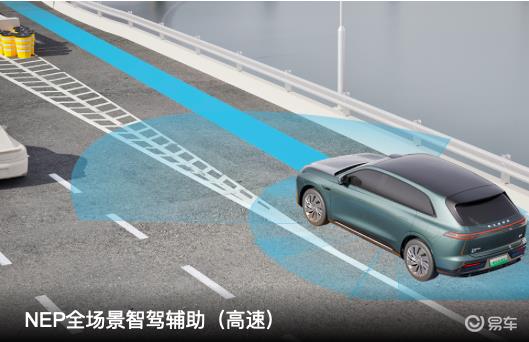Abstract:China’s economy has shifted from high-speed growth to high-quality development. At the Fourth Plenary Session of the 19th CPC Central Committee, data was added as a factor of production for the first time, and it is required to establish and improve the mechanism that the market evaluates the contribution and determines the remuneration according to the contribution, which will have a far-reaching impact on future government governance and economic and social development. This paper systematically expounds the great significance of building a super-large-scale data element market in China, deeply analyzes the challenges faced by deepening the market-oriented allocation of data elements in China from six aspects: weak overall planning, lack of data legislation, large bottleneck in the trading market, low efficiency in the allocation of innovative resources, difficult supervision of the data market, and poor data security, and puts forward practical solutions from the aspects of building a public platform, improving market requirements, studying supporting policies, promoting synergy and optimizing market structure.
Key words:Data elements; Data governance; Data security; Data transaction; Data market; Digital transformation
DOI:10.16582/j.cnki.dzzw.2020.03.001
I. Introduction
In today’s world, the value of data in the global economic operation is increasingly prominent, and the international competition for the commanding heights of the digital economy is becoming increasingly fierce. In the Decision of the Central Committee of the Communist Party of China on Several Major Issues Concerning Upholding and Perfecting the Socialism with Chinese characteristics System and Promoting the Modernization of the National Governance System and Governance Capacity (hereinafter referred to as the Decision) adopted by the resolution of the Fourth Plenary Session of the 19th CPC Central Committee, data was added as a factor of production for the first time, and it was required to establish and improve the mechanism of evaluating the contribution by the market and determining the remuneration according to the contribution. Vice Premier Liu He pointed out: "As a factor of production, data reflects that with the acceleration of digital transformation of economic activities, the multiplier effect of data on improving production efficiency has become prominent and has become an important change of the new factor of production with the most characteristics of the times." [1] China has a vast territory, a large population and a huge economy, and the scale of economic and social operation data ranks first in the world. According to IDC’s calculation, from 2018 to 2025, the amount of data owned by China will increase from 7.5ZB to 48.6ZB, accounting for 27.8% of the world, much higher than the 17.5% of the United States. [2] From the perspective of data scale and magnitude, all conditions for China to build a world-leading ultra-large-scale data market have been met, which is the strategic commanding height for China’s economic and social development to surpass its main competitors in the next decade. Under this background, the Fourth Plenary Session of the 19th Central Committee proposed to establish and improve the data factor market system, which reflected the current national regulation and management of data, and it was moving from spontaneous to conscious stage, which was helpful for China to realize the superposition of the advantages of online super-large-scale data and offline super-large-scale market, and to turn the "demographic dividend".The "cost dividend" is "data dividend" and "innovation dividend", which is helpful to seize the priority of the new track in the global competition of digital economy. Taking data as an element participating in distribution will play a guiding role in the development of digital economy, guide enterprises to pay more attention to data elements, release productivity, promote the birth of new formats, new models and new advantages of digital economy, and then improve the economic governance of the country in the market economy system. On the basis of discussing the necessity and significance of using data as a factor of production at the Fourth Plenary Session of the 19th Central Committee, this paper analyzes the challenges it faces and puts forward corresponding policy suggestions.
Second, the significance and necessity of building a data element market
Looking back on the development of human beings in the past thousands of years, the development of production factors in the economic cycle has experienced the transformation of land in the agricultural economy era, energy and factory buildings in the industrial economy era, and then to the digital economy with data and knowledge as the core. The role of data in driving industrial intelligence and promoting new production organization forms is constantly emerging, and it is also a part of the industrial revolution represented by Kondratiev’s long wave theory. [3] Victor Mayer-schoenberg [4] and Steve Lohr et al. [5] systematically discussed the changes of data resources and technology to the business model of human society, and summarized them into three basic characteristics: First, from the perspective of scale of production methods, it is believed that data elements can be used to describe the scale characteristics of new forms of labor materials, and the production scale is expanded when the production of big data is connected with computer networks; Second, from the perspective of production mode automation, the automation and intelligence of data elements can promote the solution of business intelligence problems; Third, from the perspective of the generation form of labor materials, compared with the first or second industrial revolution, machines need to match the industrial system to promote economic development, and big data needs an Internet of Things system to play its economic value, thus becoming labor materials and promoting economic development. As human society enters the era of digital economy, data plays an unprecedented role in improving the total factor productivity and becomes the core strategic resource of analogy land and energy. This is an important trend of modern economic development, and the distribution relationship must reflect this trend change with the times. Therefore, explore the establishment of a new market distribution mechanism for data elements,It is an important measure to promote economic transformation and upgrading and achieve high-quality development.
(1) The strategic need to seize the commanding heights of global competition in the future In the development process of the information revolution, the core value of data in the global economic operation is becoming more and more prominent. If oil is the core resource in the industrial economy era, then data is the most important strategic resource in the digital economy era. The "computing power" systems such as distributed computing, high-performance computing, graph computing, intelligent computing, edge computing and quantum computing, which are generated around the demand of massive data analysis and processing, have become an important engine of economic development. The core production factor of digital economy is data, which is the key achievement of information revolution. In other words, data elements will become an important factor affecting the level of industrialization in the future. [6] At present, the value of data in the global economic operation is increasingly prominent, and the international competition for the commanding heights of the digital economy is becoming increasingly fierce. According to the planning and deployment of "Industrial Internet" in the United States, "Industry 4.0" in Germany and "Intelligent Manufacturing 2025" in China, data elements will accelerate their penetration into the manufacturing sector, and at the same time, they will be deeply integrated with emerging manufacturing technologies to promote major changes in the market. [7] At the same time, the global aging trend is becoming more and more obvious, and the economic and financial cycle is facing adjustment, which brings pressure to economic growth to a certain extent, which means that the economic structure of China is bound to change. If we say that in the past few decades, China has lagged behind in global competition by relying on the demographic dividend [8] and the expansion of real estate and financial capital [9], then in the next few decades, we will accelerate the construction of the data factor market and fully release the data dividend and innovation dividend.It will be the overall strategy to seize the priority of the new track in the global competition of digital economy.
(B) the only way to effectively liberate digital productive forces
The significance of taking data as a factor of production is reflected in two aspects. First, data contributes to economic growth, which can improve economic production efficiency and promote the creation of new products and services. Second, as a factor participating in distribution, it involves the change of economic structure, especially the substitution of original production factors such as labor, land, capital and technology. The change of economic structure and the change of factors have an impact on production distribution, which will have a far-reaching impact on income distribution. [10] On the one hand, the reconstruction of data elements for the production system is reflected in the ability to form a closed loop of production. Just as the supply of capital elements comes from capital accumulation, the supply of data elements depends on the wide application of communication infrastructure. On the other hand, the supply-side structural reform proposed at present is not only a superficial product problem, but actually requires the optimal combination of various production factors. On the basis of the gradual improvement of Internet facilities, there are many bottlenecks in the current circulation of data resources in China. As a production factor, there are still many problems such as the lack of commercialization and capitalization mechanism, the inability to define ownership, the inability to evaluate quality, the inability to effectively price and the inability to trust circulation. Various institutions are worried about the sharing and circulation of data, so the data resources are seriously divided and the factors are serious. Only by establishing a market distribution mechanism conducive to the free circulation of data resource elements and effectively eliminating the existing phenomena such as data monopoly, data abuse and illegal transactions can we liberate and develop digital productive forces and improve digital production relations.Adapt to the change of supply and demand structure.
(3) An important starting point for promoting high-quality economic development
Information and communication technology is the most typical general technology today. With its development and evolution, it has a very broad application prospect, and its use is less constrained by individuals, and it can be applied to all industries and activities. [11] As a product of the information age, data has three basic conditions to promote high-quality economic development: first, the cost is relatively low and the relative cost is rapidly declining; second, the supply capacity is long-term infinite; third, it has broad application prospects in the development of market economy [12], and it has the characteristics of high liquidity, high initial fixed cost, zero marginal cost and cumulative spillover effect [13]. The data has a wide radiation-driven effect on all sectors of the national economy, which is helpful to improve the total factor productivity. According to statistics, digitalization has contributed more than 40% to the growth of labor productivity in the United States over the past decade. According to IDC statistics, in recent five years, the number of servers owned by enterprises in the United States, Japan and Britain was 2.18 times, 2.13 times and 2 times that of China respectively. In terms of industries, China’s industrial digitalization is characterized by a soft structure. The digital penetration rates of primary, secondary and tertiary industries are 1.3%, 3.6% and 17.2% respectively, and the trend of deviating from reality to virtuality is obvious. From the perspective of manufacturing system, the new manufacturing system with data as the core input will be more flexible. First, the new production system will replace the original rigid production system. Second, it can promote mass production to mass customization. Third, it will increase the added value of data elements in the era of knowledge economy. Fourth, it will promote the decentralized development of production capacity. Therefore, accelerating the cultivation of data factor market will help promote the deep integration of digital economy and real economy.Realize the transformation and upgrading from "Made in China" to "Made in China", and transform the "potential energy" of data resources into "kinetic energy" of high-quality development.
(D) to seek a breakthrough in the asymmetric advantages of global scientific and technological competition
At present, an important feature of the new round of scientific and technological revolution is that big data and technological innovation in core areas show a trend of cross-integration. Take life science as an example. At present, the total amount of data generated in the world every year is as high as EB level, and the international published biological data reaches 450TB;. In the field of space science, the earth observation data generated by global satellites and other systems reach TB level every day. In a sense, the current life science, space science and energy science are all typical big data science, and their innovation models strictly follow the data-driven innovation paradigm. At present, the convergence and sharing of scientific and technological innovation data resources in China is slow, and the gap is obvious compared with developed countries. Many high-value scientific data have not been fully shared and used in China and have flowed abroad. In the field of life sciences, since 1980s, the United States, Europe and Japan have started to build world-class biological data centers. The three biological data centers, National Biotechnology Information Center (NCBI), European Institute of Bioinformatics (EBI) and Japan DNA Database (DDBJ), have mastered and managed the world’s major biological data and knowledge resources, and are in a data monopoly position. At present, there is no similar comprehensive life science data center in China, and scientific research is highly dependent on overseas data. 55% of the international biological data downloads of up to 1.1PB per year come from China. In the future, we should promote the collection, sharing and circulation of national scientific data in an orderly manner through the establishment of market mechanism of data elements, and fully promote the collaborative innovation of Industry-University-Research with big data as the link.In the direction of blockchain, big data, 5G, artificial intelligence and energy revolution, we will seek new asymmetric advantage growth points in the new round of global science and technology competition.
(E) A new link to promote the coordinated development of China’s regions
Data elements have unique properties beyond time and space, which are having a subversive impact on economic geography. As Lu Zi [14] said: "The traditional geography of countries and coastlines is being replaced by new geography focusing on telephone numbers, satellite tracking and Internet addresses, and geography will be devoted to explaining the new space and its potential applications." At present, a series of regional integration data applications and innovation and entrepreneurship pilots have been carried out around the coordinated development strategies of major regions such as the "Belt and Road", the coordinated development of Beijing-Tianjin-Hebei, the Yangtze River Economic Belt and Guangdong-Hong Kong-Macao Greater Bay Area. It can be seen that the traditional economic theory pays attention to regional economic development, while the concept of coordinated development based on the overall situation of national development by the Supreme Leader General Secretary goes far beyond the scope of traditional economic research. The way to achieve coordinated regional development is to promote the comprehensive and coordinated development of different regions in economic, social, cultural, social and ecological dimensions, narrow the regional digital divide, and finally meet people’s needs for a better life, so that digital achievements can truly benefit the people, facilitate the people and benefit the people. The data has the characteristics of spanning time and space, and it is the link of cross-domain circulation of talents, capital, technology and industrial resources in the digital economy era. At present, several regional coordinated development strategies that China is promoting all take the cross-regional circulation of data resources as an important starting point. From a national perspective, the development of digital economy in China’s eastern, central and western regions is structurally unbalanced, and the eastern region has strong innovation ability, but the computing infrastructure resources are tight; The central and western regions are rich in energy and computing power resources, but the level of industrial development is low, and energy resources have not been fully utilized.By building a nationwide data element circulation market, it will help to accelerate the regional coordinated development strategy, create a new digital economy growth pole in the central and western regions, and form a new pattern of coordinated development in the eastern, central and western regions.
Three, the six challenges of developing the data factor market
As a brand-new factor of production in the era of digital economy, data has the characteristics of externality, non-structure, non-standardization, variability of resource targets, diminishing marginal costs and increasing returns to scale, which makes many problems and challenges to be solved in all aspects of data ownership definition, price formation, transaction circulation, development and utilization.
(A) data co-ordination is weak
Strong overall coordination and efficient integration of resources are the primary conditions for the development of the data factor market. At present, the open sharing of data resources in China has just started, and the ideological understanding of all walks of life is inconsistent, and the overall system of data opening is not yet mature. On the one hand, there is insufficient coordination at the central level. Since 2015, the inter-ministerial joint conference system for promoting the development of big data has played an important coordinating role, but it is difficult to solve a series of problems such as more professional and detailed overall decision-making and implementation that must be matched to build a very large-scale data market in the future. At the level of ministries and commissions, more than 60% of the State Council’s constituent departments, directly affiliated ad hoc organizations and directly affiliated institutions issued big data development documents in corresponding fields (see Table 1), and started the construction of big data center system in this industry. Various ministries and commissions have strengthened data management in this industry, but the problems such as numerous chimneys, compartmentalization and redundant construction are more prominent, and it is still very difficult to coordinate across departments, systems and regions, and it is difficult to form an overall synergy. In the future, faced with the characteristics of super-large scale, super-wide field, super-complex technology and full-time supervision of data circulation, the defects and obstacles of the current management system and mechanism with no top level, no connection between top and bottom and no horizontal access have become very prominent.
Table 1 Relevant documents of national ministries to promote the development of big data
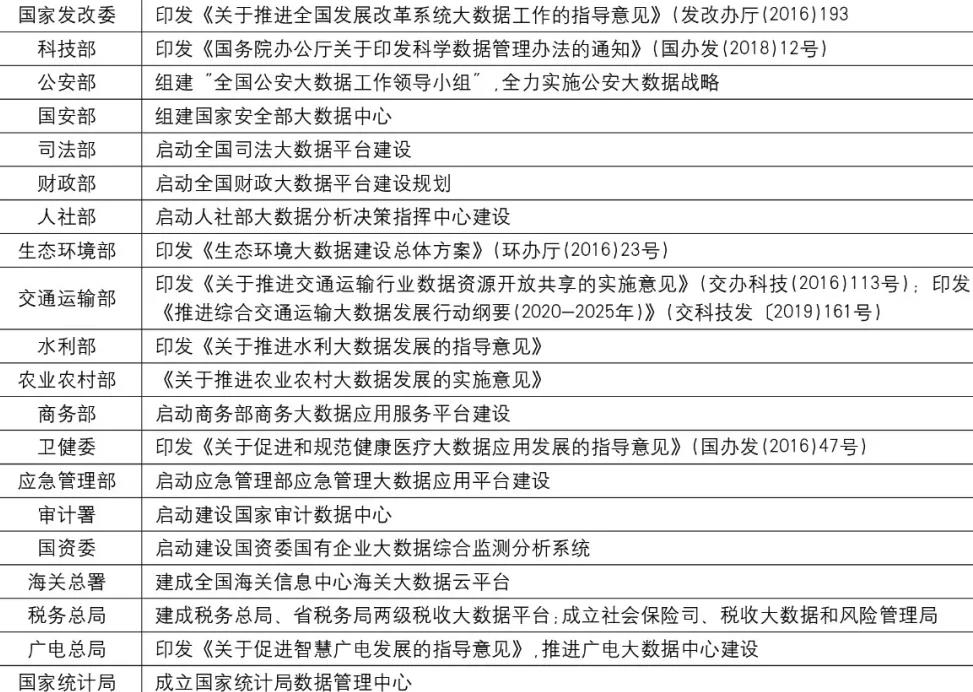
On the other hand, at the local level, since this round of institutional reform, 25 provincial-level places have established big data management institutions, and the forms of the established institutions are the establishment of big data management bureaus, government service data management bureaus and big data management centers. Due to the lack of overall planning, there are various big data institutions in various places, some of which are in charge of provincial governments, some of which are under the general office, the Development and Reform Commission, the Economic and Information Commission and other functional ministries. The diversity of institutional nature brings about different operational mechanisms (see Table 2).
Table 2 Overview of local big data institutions and functions
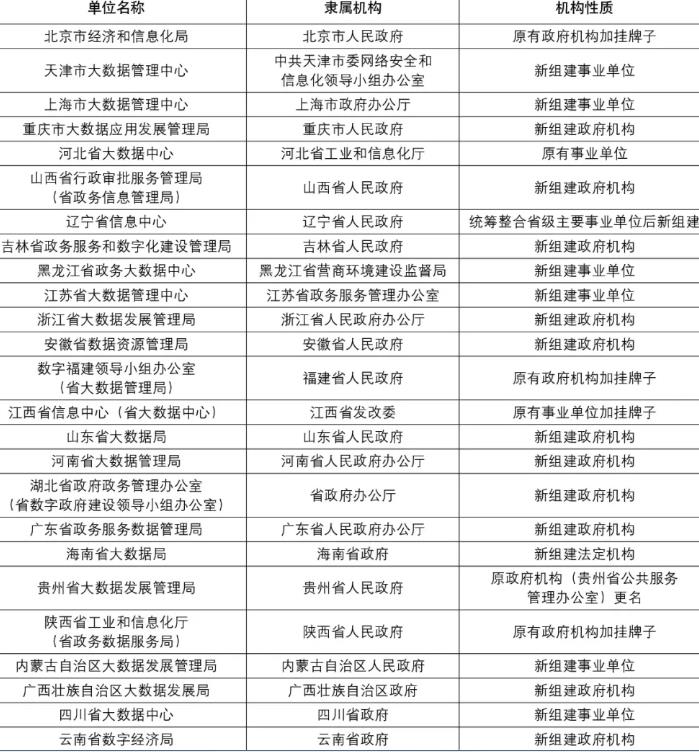
(B) Data legislation to be broken
As a virtual object, the composition of data rights system is different from that of real objects. From a global perspective, the problem of data confirmation is a huge challenge. Especially with the increasingly developed economy of Internet platform, the generation process of data ownership becomes more complicated and changeable. At present, China’s legislation on data openness, data transaction and data security needs to be broken through. First of all, the legal theory and legislation on the level of data openness are generally lagging behind. As a kind of virtual environment goods, the composition and definition of data’s rights system are quite different from traditional real objects, so it is necessary to expand and improve the traditional theory of civil rights system. At present, the Regulations on the Openness of Government Information has not adapted to the management of data openness, and the principles, platforms and management systems of data openness need to be further improved. Secondly, the process of data ownership and transaction generation is diverse, changeable and complex. For example, in terms of data transactions, data ownership, market access for data transactions, market supervision and dispute resolution mechanisms have not yet been legislated. Take the online car ride as an example. After the original number of users is collected by the platform and transmitted through the operator’s network, the related data may be related to consumers, platforms, operators and regulatory authorities at the same time. There are three perspectives of national data sovereignty, data property rights and data personality rights in the definition of its ownership, so it is difficult to unify the standards. Finally, data security, as a thorny issue, increases the difficulty of data confirmation. After the promulgation of the Network Security Law, there are many vague areas in the definition of key information infrastructure, the review of network products and services, and the definition of network operators’ security obligations.Further affect the effective confirmation of data. At the same time, western countries have made breakthroughs in the past two years and issued a number of special laws and regulations. The EU issued the General Data Protection Regulation; Britain has provided supervision and mandatory restrictions on the government’s opening of data by revising the Freedom Protection Act and issuing the Public Sector Information Reuse Directive, thus preparing a strong legal guarantee for data reuse. The United States guarantees the openness of government data through a series of legal provisions such as the Open Government Data Act, the Freedom of Information Act and the Privacy Act [15]; Japan’s "Guide to the signing of artificial intelligence and data utilization" has systematically defined data ownership and other issues. In contrast, although China’s General Principles of Civil Law stipulates the protection of personal information and data, it lacks a special subordinate law, which has obviously lagged behind western countries in the legislative practice of data confirmation. Different from western countries, China’s data legislation is first reflected in the national strategic planning. In August 2015, the State Council promulgated the Action Plan for Promoting Big Data Development. Although this document has a leading role in promoting data legislation, it has a weak consideration of data security factors. [16]
(C) the trading market is difficult to cultivate
Data has the characteristics of exclusiveness, difference in quality and value, high collection cost, etc. Therefore, the barriers to entry in the big data market have been improved and market monopoly has been formed. [17] On the one hand, the high data cost reduces the availability of data; On the other hand, the quality and value of data will decrease with the passage of time. For enterprises, if the effectiveness and relevance of data cannot be guaranteed, their competitive advantage will be lost. In order to promote the development of data trading market and stimulate the vitality of market participants, it is particularly urgent to clarify the standards and forms of data trading. At present, the cultivation of data trading market faces the following five problems: First, the system of data standardization, capitalization and commercialization has not yet been established. When all parties carry out data sharing and circulation, it is impossible to establish a unified data market because of the lack of unified standards. Second, there is a lack of data revenue and cost estimation mechanisms. This is because the value of data will change with the changes of transaction subjects and application scenarios, and the problem of information asymmetry is prone to occur in the transaction process. Third, it is difficult to establish a trust mechanism between the two parties to the transaction, and it is difficult to solve the problem of grasping the flow direction of data use. Fourth, the data pricing model lacks a systematic framework. At present, a large number of scattered data transaction pricing are aimed at application scenarios, lacking a unified data pricing standard. Fifth, the elements of forming a trading market are not yet available, and China still lacks a trading element system to realize data capitalization, commercialization and standardization, which restricts the formation of a data trading market. In the pre-transaction stage, there is a lack of evaluation system for data products and traders, and the data quality is difficult to guarantee.Dirty data and false data can be seen everywhere. In the middle stage of transaction, there is no unified pricing system for transaction matching, and it relies on peer-to-peer transaction or even "data black market", which intensifies the breeding of data abuse and fraud. In the post-transaction stage, there is a lack of a unified national data trusted circulation system, and the application of new technologies such as blockchain is insufficient, which further hinders the smooth transaction and circulation of data elements.
(D) the allocation of innovative resources is difficult
In the era of digital economy, the space of resource allocation is gradually widened, from the original physical space to the cyberspace, and cross-regional system innovation is possible, but the supporting marketing services, general technologies and standards have not been established and improved, which has affected the allocation of innovative resources to some extent. [18] At present, the problems faced by the allocation of data resources are mainly concentrated in the following four aspects: First, at the government management level, the barriers to data resource sharing are still difficult to break, various ministries and commissions are in charge of industry data, and the functions of local big data institutions are not unified enough. As a result, the scheduling of data resources lacks overall management, the problem of fragmentation is widespread, and the sharing channels are not smooth. Second, it is difficult to connect data resources between government and enterprises. On the one hand, China’s government data opening has just started, and the size of the national open data set is only 1/9 of that of the United States, and only 7% of the enterprise production and operation data comes from the government. On the other hand, companies and enterprises in the market environment, especially the super-large Internet enterprises with massive data, have low willingness to open data resources to the government for the protection of users’ privacy and the maintenance of commercial interests. Third, at the market level, the boundaries of echelon division of Internet companies have gradually become clear, and the monopoly phenomenon has become prominent, forming data sharing camps such as "Ali Department" and "Tencent Department". The data barriers between them are strict, which hinders the pace of integration of the data factor market. Fourthly, at the level of synergy in Industry-University-Research, there is a serious disconnect between the data and innovation chain. Scientific research institutions in colleges and universities with talents and technologies lack first-hand data to carry out research.There is a lack of data analysis talents in government agencies and head Internet companies with massive data, which brings the dilemma of "two skins" in the field of big data.
(E) Difficult data market supervision
The combination of digital technology and market system has reconstructed the relationship structure among participants in the market, and also brought new market competition modes and rules. However, most of the current market supervision was born in the era of industrial economy, and there are still many places that are not suitable for the development of digital economy. This is because the competition in the digital economy market has increased the online dimension, which is a dimension-upgrading competition. After the dimension-upgrading, the digital market competition not only gives enterprises stronger capabilities, but also brings irregular competition. For example, the supervision measures for monopoly platform enterprises need to be strengthened. At present, in the key areas of digital economy, such as social media, sharing economy, mobile payment and e-commerce, the phenomenon of platform monopoly has become increasingly prominent. The scale and value of data resources mastered by some super-large enterprises have even surpassed that of government regulatory authorities, and there is a hidden danger of forming a "land outside the law" in the data market. At present, three "inadaptability" problems in data factor market supervision deserve attention. First, the original supervision mode for traditional enterprises is not compatible with the efficient liquidity of the data factor market. It is urgent to establish a new supervision mode before and after the event and strengthen the emergency response and handling ability of major emergencies in the digital economy. Second, the fragmented regulatory system is incompatible with the synergy of the data factor market. Under the compartmentalized and localized data management mechanism, the regulatory power of a single department or a single region is no longer enough to meet the cross-regional, cross-industry and cross-level data regulatory needs driven by "internet plus" and "Big Data+". Third, the traditional offline supervision means are not compatible with the online and offline integration characteristics of the data factor market.For example, some data-based enterprises in the fields of education, travel, medical care, finance, etc. are difficult to obtain corresponding licenses and qualifications with full reference to the qualifications of offline business entities, which invisibly raises the threshold for entrepreneurship.
(VI) Difficulties in ensuring data security
In the field of national governance, security is the most important issue in the whole system. Jovan Kurbalija and others have defined the standard of Internet security, which mainly includes three factors: one is the type of behavior, including data theft, data interference, illegal intrusion, spyware and identity theft; The second is the types of criminals, including hackers, cyber criminals, cyber fighters or cyber terrorists. The third is the target type, mainly including individuals, private enterprises and public institutions, key infrastructure, government and military facilities. [19] To a certain extent, data security has become a key common issue related to national political, economic, social, cultural, military and diplomatic security. At the end of 2017, the National Security Strategy Report issued by the Trump administration in the United States pointed out that the United States will expand its focus from only protecting network security to protecting network and its data security at the same time, and further impose a series of normative constraints on open data, trying to find a balance between data openness and national security, law enforcement, and personal privacy protection. At present, the development of data factor market in China also needs to pay close attention to data security. First, the hidden danger of the data "Achilles heel" has become increasingly prominent. In the process of China’s digital economy development and digital government construction, citizens, enterprises and social organizations and other massive data related to social security, household registration, disease control and policies are being integrated and stored on a large scale. Once these data are leaked, it may cause privacy exposure and economic damage to individuals.It may cause the leakage of core business data and business secrets to enterprises and institutions, and may cause problems such as chaotic regulation, wrong decision-making and paralysis of governance to the government. Second, the particularity of big data technology poses new challenges to security technology. On the one hand, the information system architecture of key technologies will face changes, but it is bound to bring vulnerability risks. At present, most big data platforms are secondary developed based on Hadoop framework, and the security mechanism is lacking and the security guarantee ability is weak. Third, the overall strength of the network security industry is weak. There are security problems at the individual, enterprise, national and international levels, as well as the underlying technology of the Internet. Hacking attacks, cyber crimes, cyber theft and other Internet security incidents occur frequently.
Four, five countermeasures to build the data factor market
Considering data as a new factor of production shows that data will change from helping economic development to leading economic development. Therefore, we should adhere to the combination of "visible hand" and "invisible hand" and make concerted efforts in many aspects to promote the construction of a data factor market with clear and reasonable ownership, autonomous and orderly flow and efficient and fair allocation, and give play to the role of data in enhancing the productivity of market economy. The country should speed up infrastructure construction, and the transformation and construction of Internet and energy network is the key to promote the extensive and deep integration of informatization and industrialization, and it is also the main direction to promote high-quality development. At the same time, it should strengthen market cultivation, establish new data factor policies, promote industrial linkage, optimize the economic development structure, and shape new competitive advantages in the digital economy era.
(1) Building a big platform: building a public service platform for data circulation in the whole society.
To improve the data element market, the construction of the basic platform can not be ignored. From the perspective of development space, with the accelerated promotion of new technologies such as 5G and blockchain in the next decade, the infrastructure of the data element market will face huge bottlenecks. Accelerate the construction of a national integrated national big data center system, and establish and improve a public service system for data element circulation in four directions: "political-political" data sharing, "political-enterprise" data opening, "enterprise-political" data collection and "enterprise-enterprise" data interoperability. The first is to improve the public data sharing and exchange platform system. Deepen the integration and sharing of government information systems, build a national information exchange system, establish a data sharing and exchange mechanism covering various government departments and public departments at all levels, and promote cross-regional, cross-departmental and cross-level government data sharing. The second is to establish and improve the national public data open system. First of all, departments at all levels need to improve and perfect the public data opening system, formulate data opening processes and plans, open relevant data sets on the premise of strengthening security and privacy protection, and form a national intelligence crowdsourcing mechanism for big data development and utilization. The third is to establish and improve the socialized data collection system. Clean up, integrate and coordinate the data collection and information reporting channels of governments at all levels for social organizations, establish a unified acquisition and cooperation mechanism for social data according to laws and regulations, explore the establishment of a data directory filing mechanism for super-large-scale head Internet enterprises, promote the platform docking of government data and social data, and give full play to the joint efforts of social governance. The fourth is to establish a national data resource circulation and trading system.Build a whole-process data element flow platform including data transaction matching, transaction supervision, asset pricing and dispute arbitration, and clarify the mechanisms of data registration, evaluation, pricing, transaction tracking and security audit. Establish a quality evaluation and credit rating system for data resources in the whole society. Integrate new technologies such as blockchain and build a platform for data authorization, data traceability and data integrity detection in the whole society. On the basis of the above, we will build a new infrastructure system for ultra-large-scale data. Create a "national digital network", promote the "east-to-west calculation", realize the effective connection between industrial resources in the east and computing power and energy in the west, and at the same time cooperate with countries such as Beijing-Tianjin-Hebei, Guangdong-Hong Kong-Macao and the Yangtze River Delta to build regional data centers, forming a new pattern of coordinated development of East, West and China with data as the link.
(B) Cultivate a large market: create a market environment that facilitates the circulation of data elements.
The construction of circulation environment should be guided by the application demand, accurately meet the market demand, adhere to the principle of multi-synergy and co-governance, give full play to the advantages of government and market resources, strengthen the system construction of data pricing, access supervision, fair competition, cross-border circulation and risk prevention, and create a healthy and sustainable data market environment. The first is to establish a basic framework for data pricing. We will build a national unified registration and confirmation system for data resources, dynamically manage the ownership definition and circulation of original data, desensitized data, modeled data and artificial intelligent data by hierarchical classification, and form a confirmation framework covering data generation, use, collection, storage, monitoring, revenue, statistics, auditing and other aspects for different time and space and different subjects. Explore the establishment of a data resource circulation pricing mechanism that combines cost pricing with revenue pricing, and one-time pricing with long-term pricing. The second is to simplify the data market access mechanism. Revise and improve the existing legal regulations such as the Measures for the Administration of Internet Information Services, lower the entry threshold for new technologies, new businesses and entrepreneurial enterprises in the data field, clarify the relationship between pre-approval and business access in combination with the requirements of commercial system reform, and simplify and standardize the filing system for market access of data services by combining positive guidance list, negative prohibition list and certification rating of third-party institutions. The third is to strengthen post-event supervision. We will sort out the regulatory links and online and offline regulatory elements for the development of the data industry, and improve the post-event regulatory means based on data and with credit as the core.Establish an information collection and reporting mechanism covering the market competition, changes in equity, service operation, information security, resource management and other aspects of data enterprises, study and form regulatory governance means for new unfair competition behaviors such as data traffic fraud, privacy disclosure, data disclosure and abuse, and explore the establishment of a new regulatory mechanism involving government, platform-based enterprises, data market entities and individuals. The fourth is to explore and improve the market mechanism of cross-border data circulation. Make full use of new technologies such as blockchain to explore the establishment of an open and transparent cross-border data flow supervision system and actively participate in the formulation of relevant international rules for the cross-border data circulation market. Relying on Hainan Free Trade Zone (Hong Kong) and Shenzhen Socialism with Chinese characteristics Pilot Demonstration Zone, pilot domestic offshore data center services will be carried out, a number of global data ports will be built, and foreign service providers will be allowed to set up joint ventures or wholly-owned enterprises in the free trade zone to develop export-oriented data services. The fifth is to establish a data market risk prevention and control system. Establish an enterprise-oriented data security filing mechanism to improve the ability of emergency resolution of data security incidents. Establish an early warning mechanism for data market security risks, respond to social problems such as changes in employment structure, privacy disclosure and data discrimination brought by data in advance, and strictly control data capital market risks. Establish a risk prevention and control mechanism for cross-border data flow, and strengthen cross-border data flow monitoring and business collaborative supervision. Strengthen the security of digital infrastructure in key areas, effectively increase the procurement and promotion of independent security products, and protect patents, digital copyrights, trade secrets and personal privacy data.
(C) Study the grand policy: improve the toolbox of data elements distribution policy.
The establishment of market elements is inseparable from the constraints of laws and policies, and the laws of fair competition in the big data market need to be coordinated with each other. On the one hand, the definition of data ownership is the premise of orderly competition in the big data market. On the other hand, data policies and legislation need to be closely integrated with anti-monopoly law, civil law, privacy law, data protection law and consumer rights protection law. [20] Therefore, we should adhere to prudence and tolerance, adapt and optimize the policies related to the circulation of data elements in finance, taxation, finance, investment, etc., and establish a policy toolbox for the distribution of data elements that matches the digital productivity. First, explore and promote the application of "data finance" model in government governance. We will promote the operation and value-added development and utilization of public data assets in an orderly manner, explore the reform model of financial management system linked to the contribution of digital economy and fiscal expenditure, and gradually form a benign model of open sharing of government data to promote local fiscal revenue. The second is to establish and improve the tax collection and management system that adapts to the characteristics of data elements. Establish a cross-regional joint tax collection and management mechanism for large-scale platform enterprises, explore tax deduction policies that encourage enterprises to safely share regulatory data with the government, increase tax incentives for small and micro enterprises and technological innovation enterprises with data as the core, and actively participate in the construction of international tax rules system for digital economy. The third is to vigorously develop digital finance and promote the digital transformation of the financial system. Implement and improve financial policies that adapt to the marketization of data elements, actively explore the application of new technologies such as blockchain and artificial intelligence in supervising the financial market, and give play to the role of financial institutions in the trading market.Encourage financial institutions to carry out business innovation. Optimize the investment structure in the digital economy infrastructure field, strengthen investment guidance, effectively change the orientation of government investment in the digital economy field of "emphasizing hardware, neglecting software, emphasizing construction, neglecting application, emphasizing supervision and neglecting service", and guide social capital to participate in digital economy investment. The fourth is to solve the problem of data confirmation and legislation. We should establish a data property right framework oriented to promote industrial development, dynamically manage the ownership of original data, desensitized data, modeled data and artificial intelligent data by hierarchical classification, establish a unified registration and confirmation system of national data resources, and speed up the progress of data legislation. The fifth is to build a macro-policy toolbox that is suitable for the data market. Improve financial and taxation policies, promote the transformation of land finance to data finance, explore cross-domain tax collection and management of data economy, and vigorously develop digital finance. Optimize the macro-economic troika, strengthen data-driven consumption upgrading, increase digital effective investment, and promote the construction of "Digital Silk Road".
(D) Promote great linkage: promote the deep integration of data and other innovative elements.
Today, with the rapid development of digitalization and intelligence, various enterprises are realizing the intelligence and informatization of production through the construction of "smart factories". At the same time, make full use of Internet marketing platform to form users’ thinking, improve product innovation and design ability, realize product personalization and diversification, improve the efficiency and level of resource utilization and enterprise management, and promote the flattening and rationalization of organizational structure. [21] This is because the improvement of data elements is of great significance for deepening and upgrading the industrial chain. Therefore, we explore the establishment of a "five-chain synergy" institutional framework that effectively links the industrial chain, innovation chain, capital chain and talent chain with data links, and promote the establishment of an industrial system in which the real economy, scientific and technological innovation, modern finance and human resources develop synergistically. First, focus on the industrial chain and connect innovation chain with data links. Vigorously promote the construction of scientific data sharing platform and promote data-driven innovation research and development. We will build a collaborative innovation system in Industry-University-Research with data as the link, encourage the establishment of an open and innovative public platform for big data and artificial intelligence in the form of "government-assisted private", and form a crowdsourcing model for big data intelligence. The second is to activate the capital chain with the data chain around the industrial chain. Establish an industrial operation monitoring and precision investment system based on big data, set up intellectual property funds, collaborative innovation funds and industrial M&A funds for different links in the industrial chain, form a precise investment and financing channel for the whole chain, and promote the convergence of funds to real economic enterprises with competitive advantages. The third is to rely on the industrial chain and cultivate the talent chain with the data chain. Relying on the advantages of key industry data clusters, we will build big data practice training platforms for different industries.Cultivate world-class data scientists, engineers and high-level innovation teams. Give full play to the advantages of accurate portrait of big data talents and matching supply and demand, provide "agent", "one-stop" and "all-weather" services for talents at all levels, and promote the same frequency resonance of industrial chain, data chain and talent chain.
(E) Optimize the macro structure: fully release the transformation and driving role of data elements.
The flow of production factors is conducive to the shift of economic center of gravity. While improving the allocation efficiency of data elements, it is necessary to deeply analyze the root causes that affect the supply-side structural reform and seek the best position of data elements in the market structure. Therefore, it is necessary to vigorously promote the deep integration of big data, artificial intelligence, blockchain, 5G and other technical forms with the real economy, cultivate new kinetic energy with informationization, and promote new development with new kinetic energy, thus driving the quality change, efficiency change and power change of China’s economic development. The first is to optimize the power structure. On the consumer side, we should cultivate a new consumption format and model with data as the core, and strengthen the pulling effect of data on consumption upgrading. On the investment side, accelerate the construction of digital economic infrastructure such as big data, artificial intelligence and blockchain to stimulate effective investment. On the trade side, build a "Belt and Road" big data public service platform to provide data services for local governments and social organizations to "go global" and global trade decisions. The second is to optimize the industrial structure. We will comprehensively promote the application and industrial incubation of new technologies such as big data, artificial intelligence, blockchain and 5G, and create a good "ecological environment" for the development of digital industries. Accelerate the digital transformation of industries, create an atmosphere of data innovation and entrepreneurship in generate where enterprises are competing for development and vitality, promote the big data transformation of "data-rich mining areas" such as the Internet, high-end manufacturing and modern agriculture, and give play to the "adhesive" effect of data to promote the integration and development of primary, secondary and tertiary industries. The third is to optimize the regional structure. Promote the construction of the "east-to-west calculation" project, and promote the effective connection between eastern industries and innovative resources and western computing power and energy resources.Form a new pattern of coordinated development of East, West and China with data as the link; We will build a number of regional data elements sharing and circulation hub projects in Guangdong, Hong Kong, Macao, Beijing, Tianjin and Hebei, and the Yangtze River Delta, and give full play to the role of data elements as a link and bridge in promoting regional coordinated development.
V. Conclusion
With the in-depth development of big data, artificial intelligence and 5G, the trend of economic globalization is increasing day by day. In the network society based on information technology, its economic form is bound to change. As the "bull’s nose" leading the high-quality development of China in the future, the core of digital economy is the productivity based on data and the emphasis on profitability. Digitalization not only refers to the massive expansion of data production itself. It also means that the production technology and management mode adapt to the changes brought about by the information revolution, which can improve the production efficiency of various production fields in the economy, resulting in the formation of new economic paradigms and organizational forms, but at the same time, it also releases the productivity contained in traditional industries. Therefore, developing the digital economy, building a digital government and building a smart society all depend on the cultivation of a perfect and mature data factor market system. This paper systematically expounds the challenges and countermeasures faced by the cultivation of China’s data factor market system at present, hoping to provide useful reference for the follow-up industry, academia and government departments to carry out related work.
Authors: Yu Shiyang, Director of Big Data Development Department of National Information Center, Wang Jiandong, Director, Guo Qiaomin, Ph.D. student of Peking University.
This article was published in the third issue of E-government in 2020.















